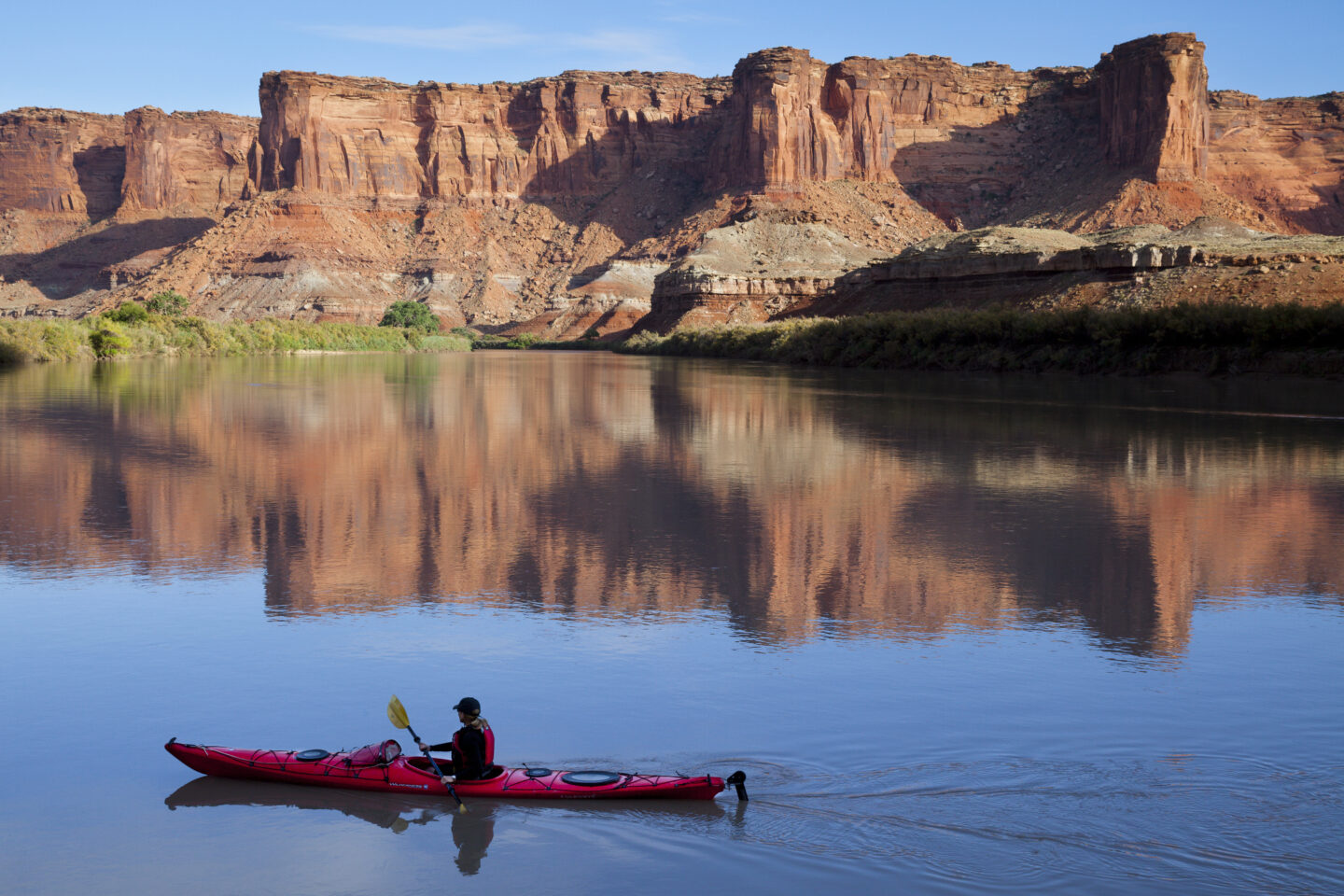Good news! The Bureau of Land Management (BLM) has taken meaningful steps to protect the world-renowned Labyrinth Canyon and Gemini Bridges area near Moab!
On September 28th, the BLM released a final motorized vehicle travel management plan for this 300,000-acre landscape which identifies areas and routes open and closed to motorized use for years to come. It will help protect cultural sites, riparian habitat, and the experience of non-motorized recreationists while allowing for motorized recreation on more than 800 miles of dirt trails and routes.
Please join us in thanking the BLM for protecting Labyrinth Canyon.

Known as a gem of the American West, more than 40 miles of the serene Green River flow through Labyrinth Canyon’s towering redrock canyons. Home to unmatched quiet recreational opportunities, irreplaceable cultural resources, and crucial wildlife habitat, Labyrinth Canyon’s importance, and the significance of this plan, cannot be overstated.
Thanks to decades of advocacy by SUWA and others, the west side of the canyon was designated as wilderness in 2019 and the river corridor itself is designated as a Scenic River under the Wild and Scenic Rivers Act. The east side has not yet been designated wilderness, though America’s Red Rock Wilderness Act would do so. In the meantime, this historic travel management plan will go a long way to ensuring that all of Labyrinth Canyon is managed in a way that does justice to this remarkable place.
Labyrinth Canyon has captured the hearts of many—though perhaps no one speaks quite as fondly as the Holladay family, which has been leading expeditions on the river for three generations. After learning of the new plan, Jan Holladay Wood (co-owner of Holiday Expeditions), said:
I am thrilled that after many hard-fought chapters in the endurance race that is wildlands protection, we are finally safeguarding this incredible canyon. It is a major victory to float down this tranquil stretch of the Green River without the disorienting distraction of motorized access along its banks. In 1989 my dad, Dee Holladay, and Holiday Expeditions first took elected officials on a trip to advocate for protections for Labyrinth Canyon. I know Dad, and all those who fought for this who are no longer with us today, would be proud.
Click here to thank the BLM for protecting Labyrinth Canyon.
Over the next several years, the BLM will complete eight more travel plans in Utah. This gives the agency a chance to get things right by ensuring access to trailheads, scenic overlooks, and recreational opportunities while protecting the very reason people want to visit such remote areas in the first place: to enjoy the unspoiled beauty of Utah’s public lands.
At every step in the process, for every plan, SUWA will be there, fighting for Utah’s wild places. Our work on travel plans—which goes back to 1999, when we first filed litigation challenging the BLM’s mismanagement of motorized vehicles across the state—pulls in every member of the SUWA team. Everyone from our field experts who document the condition of off-road vehicle routes, to the organizers who help people write effective public comments, to our staff attorneys who ensure the BLM is following federal law. If you’re able, please consider a donation to support our work.
For too long, the BLM has prioritized off-road vehicle use at the expense of Utah’s incredible natural and cultural resources. But the Labyrinth Canyon plan represents an important step forward to guide the management of Utah’s public lands and reduce the excess density of off-road vehicle routes in this area. Thank you for helping us ensure this positive outcome.

